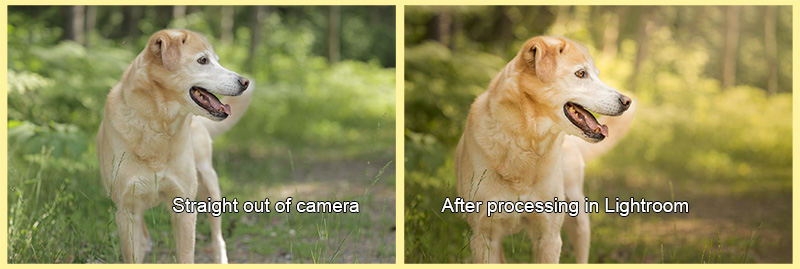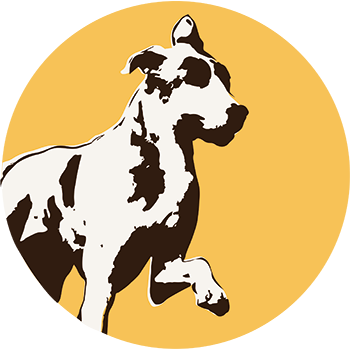Adjust the Dog – Introduction to Lightroom
We’re just here for the photos.
Registration opens January 22, 2025

You know how to capture a good photo — but does the next step — processing those images — leave you feeling frustrated and overwhelmed?
Many photographers feel that way when they think about processing their images. Photo editing software appears complicated and it can be hard to know where to start.
In this class, you will learn a simple, step-by-step procedure for taking your photo from blah to beautiful.
Clicking the shutter has always only been the first half of the process when talking about photography.
Back in the good ol’ days of film, clicking the camera only got you halfway to a completed photograph. The other half was the development process, whether that was done at a commercial lab or in a photographer’s custom darkroom. Only after the film was put through several rounds of chemical baths to bring out all of the details did the print emerge as a finished product.
In the digital photography era, the click of the shutter is still only half of the process. Photos do not come out of a camera in their completed form. They too are sent through a process similar to their film counterparts, albeit without quite as much of a mess. Instead of chemical baths, we use computers and software.
Lectures will explain the tools and how they work, while the assignments give you a chance to practice them on photos with access to expert help from your instructor.
The tools in Lightroom help us fix our mistakes, such as underexposed or overexposed photos. Cropping a photo can dramatically improve our overall composition. Reducing noise in our photos can compensate for photos taken in poor light. Lightroom is also better at giving us more control over the color and contrast in our images.
The course material for this class is written for Lightroom Classic. You may use other photo editing software, but the instructor will only provide detailed technical support for the most current version of Lightroom Classic.
Completion of Shoot the Dog and/or Expose the Dog is strongly recommended. You may sign up for a Gold level spot if you have not completed Shoot the Dog and/or Expose the Dog, but familiarity of the basic photography skills taught in those classes will be assumed.
Please see the Equipment requirements for this class on the FDSA website in the “Prerequisties & Supplies” section.

About Your Instructor

This includes the AKC National Agility Championships, AKC Agility Invitational, USDAA Cynosport World Games, UKI US Open, UKI West Coast Open, and NADAC Championships, as well as numerous local trials, regional events, and breed national specialties.
She has photographed a wide variety of dog sports, including agility, obedience, rally, and conformation. She also enjoys the challenge of photographing birds and other wildlife.
Amy is fluent in both Canon and Nikon and knows just enough about Sony to be dangerous (i.e. answer basic questions about it).
What Our Students Say:
Even though I took Adjust the Dog at bronze level, I worked through all my own labs AND all the other students’ labs. Your comments, critiques, and guidance were beautifully suited to each person’s proficiency level, and we all came out of class with many more skills and much more understanding than we started with. I’m looking forward to my next classes with you.
REALNESS. Connection. performance & PLAY.
Hop on our mailing list to be the first to get photo updates, hear about upcoming events, and to see our top 5 favorite images we shoot each month:
